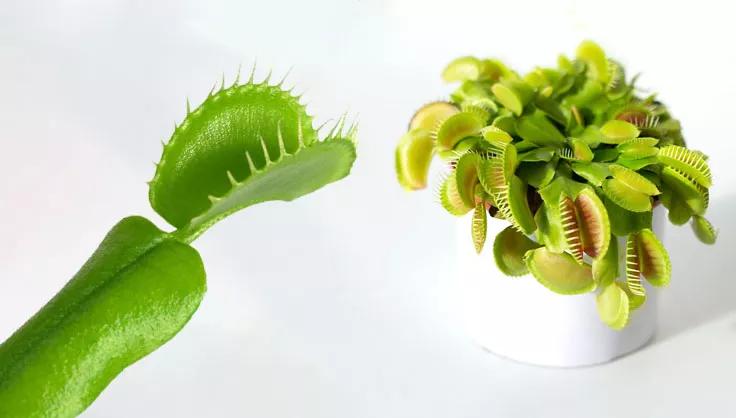How to Care for a Venus Flytrap

Choosing Your Venus Flytrap
For beginners, the typical green variety is a great choice as it is relatively hardy. For those who want something more visually striking, ‘Red Dragon’ or ‘B52’ can be exciting options.
Commonly, Venus Flytraps are vibrant green with red interiors in their traps, but there are varieties like ‘Red Dragon’ which are deep red all over, and ‘B52’, noted for its large trap size. These plants are not just fascinating to watch but can be a fun and educational addition to your home.
How to Care for Venus Flytraps
Light
Venus Flytraps need plenty of light. Ideally, they should receive about 12 hours of direct sunlight daily. If growing them indoors, a sunny window or a grow light can suffice.
Soil
The ideal soil for Venus Flytraps is a mixture of sphagnum peat moss and perlite or silica sand (in a 1:1 ratio). They require nutrient-poor, acidic soil to thrive.
Fertilizer
Generally, Venus Flytraps don’t need fertilizer. They get their nutrients from the insects they consume. If you must fertilize, use a specially formulated fertilizer for carnivorous plants, applied sparingly.
Watering
Water with distilled water or rainwater, as tap water can be harmful to them. The soil should be kept consistently moist but not waterlogged. A tray with water can help maintain the necessary humidity.
Pruning
Trimming isn’t typically necessary, but you can remove dead traps or leaves to keep the plant looking tidy and healthy.
Repotting
Repot every year or two, as the nutrients in the soil will deplete over time. Spring is the best time to repot Venus Flytraps.
Propagation
Propagation is usually done by seed or by dividing the rhizomes. Division is easier and faster for producing mature plants.
Common Problems with Venus Flytraps
Pests and Diseases
The most common pests are aphids and fungal gnats. For diseases, be watchful of fungal infections, which are often due to excessive moisture. Proper air circulation and avoiding overwatering are key.
Toxicity
Venus Flytraps are not toxic to pets or humans. However, they are delicate, so it's best to keep them out of reach of curious pets and children.
Venus Flytrap FAQs
Why is my Venus Flytrap not closing its traps?
This could be due to insufficient light, overfeeding, or the trap being old and losing its efficiency. Ensure adequate light and avoid overfeeding.
Can I feed my Venus Flytrap meat?
It’s best to let your Venus Flytrap catch its food naturally. If you must feed it, use insects like flies or small spiders. Avoid feeding it human food or meat.
How do I overwinter my Venus Flytrap?
In winter, Venus Flytraps go dormant. Reduce watering, but don't let the soil dry out completely. Keep them in a cool, but not freezing, environment.
Caring for Venus Flytraps can be a unique and rewarding gardening experience. Their fascinating feeding mechanism and distinct appearance make them a captivating addition to any plant collection. Enjoy your carnivorous gardening adventure!
Print this Article:
Get the Dirt
Stay up to date on new articles and advice. Please fill out the information below.
